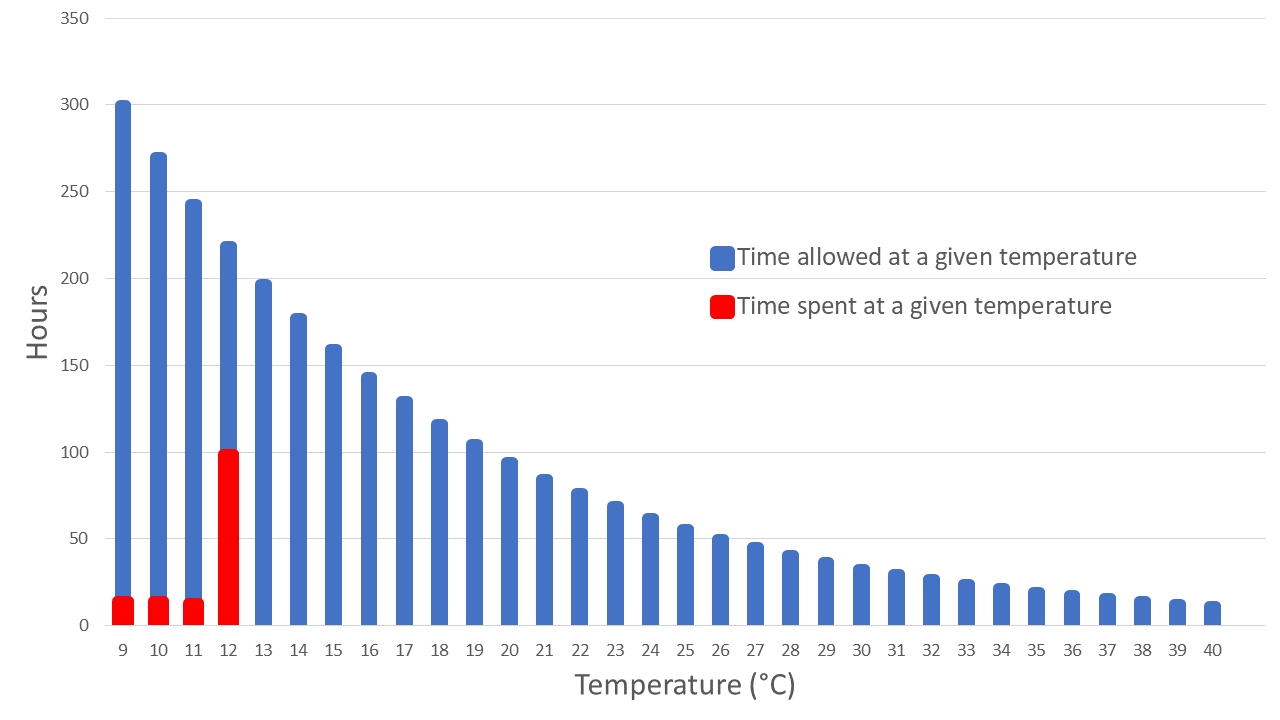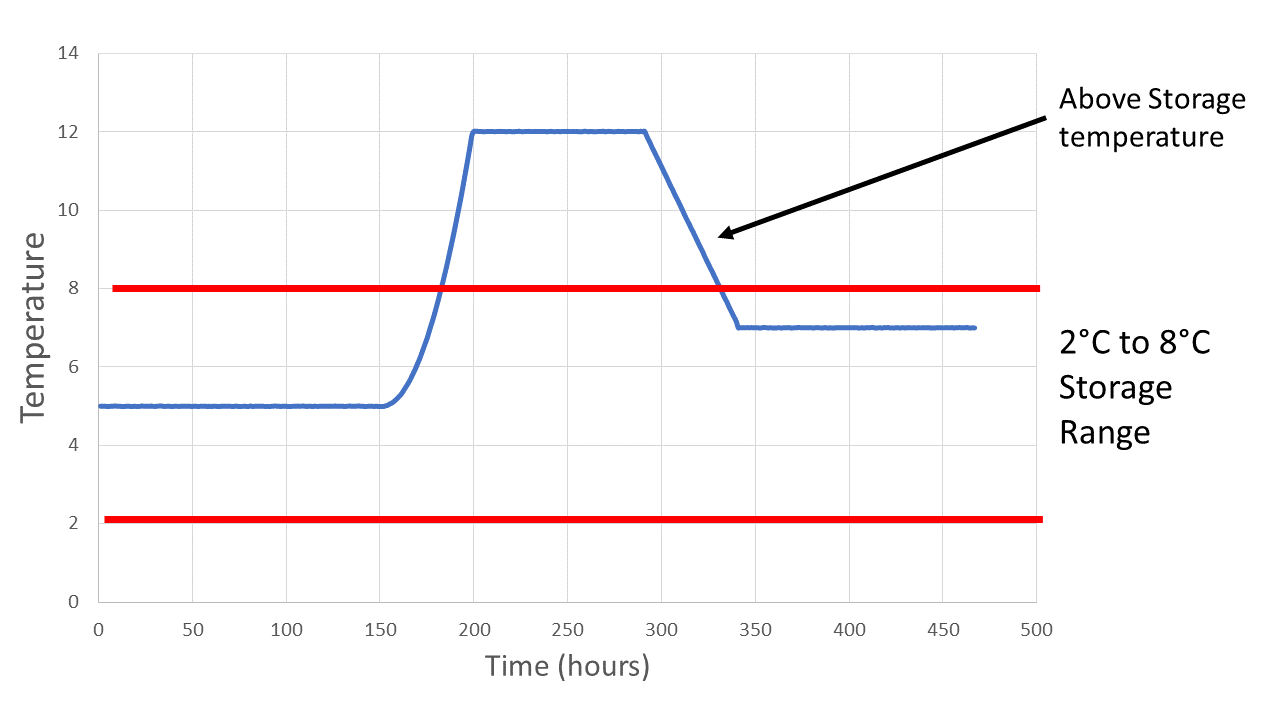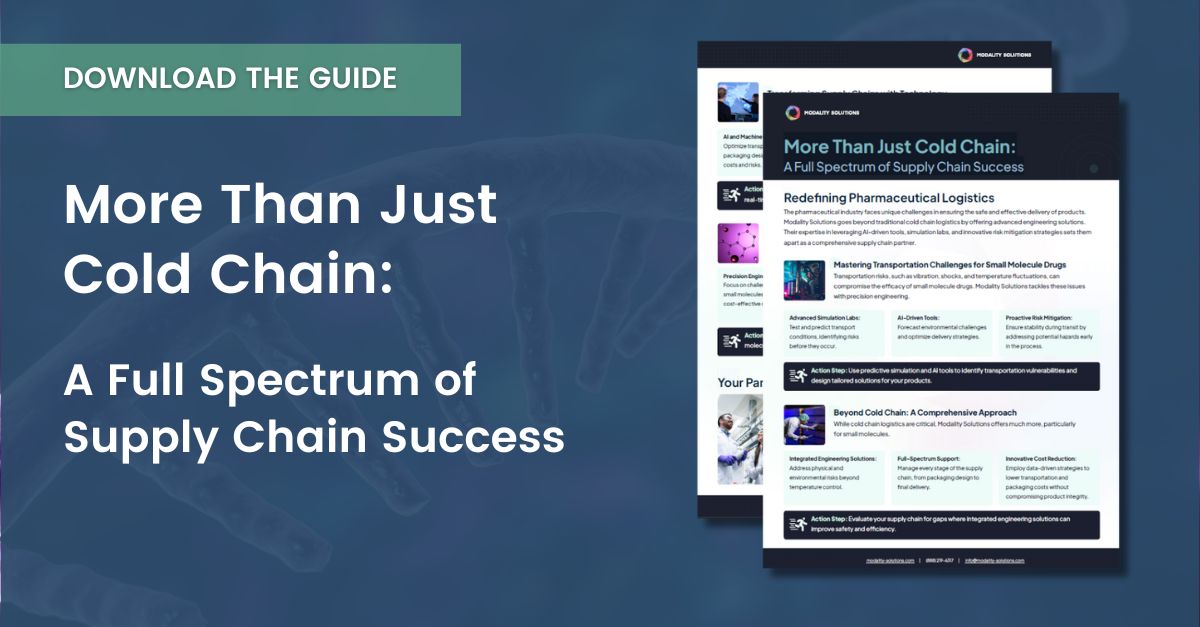Ship, Quarantine, or Discard: A Streamlined Process and Analytical Tool Yields Better Decisions on Resolving Temperature Excursions
It’s estimated that seven out of ten pharmaceutical products in the US require temperature control during transportation1, a trend that’s escalated with the rapid growth in temperature-sensitive therapeutics like large molecule, protein-based biologics. With many biopharmaceutical products now requiring storage at consistent temperatures within the range of 2° to 8° Celsius—and some requiring a deep-frozen state of -60° Celsius or below—the integrity of the biopharmaceutical cold chain is more vital than ever.
When temperature excursions occur during the shipment and storage of controlled-temperature drug products or during clinical trials, the product’s stability, efficacy, and safety can be at risk. That makes it essential for pharmaceutical companies to make the most informed decisions about how to resolve temperature excursions and handle drug products exposed to such excursions. Our experience helping a leading biopharmaceutical company address this challenge demonstrates the value of a data-driven, analytical approach to identifying and mitigating cold chain temperature excursions.
The Challenge of Managing Temperature Excursions
Reducing the risks associated with temperature excursions during shipment and storage is essential to protecting controlled temperature drug products. But across a global, complex biopharmaceutical supply chain, the tasks of monitoring and reporting on temperature excursions, managing temperature excursion data, and mitigating temperature-related issues promptly are becoming much more challenging.
Speed is of the essence when it comes to detecting that a temperature excursion has occurred, identifying the root cause, and determining the best course of action to ensure a safe, efficacious product makes it to the patient on time. That’s especially true for personalized medicines, such as cell and gene therapies that use the patient’s biological material as the therapeutic. When the treatment is costly to produce and in scarce supply, quickly identifying and correcting temperature excursions is a must.
Minimizing the impact of temperature excursions a drug product is exposed to in transit—and taking fast action in the event they occur—requires an effective and efficient temperature excursion management process that includes these critical steps:
- Identifying that an excursion event has occurred (using the correct temperature monitoring device, which will vary based on factors like location, resource availability, and technology)
- Analyzing temperature excursion data
- Using data to make an informed decision about whether to continue with the shipment, quarantine the affected product, or discard and replace it
Unfortunately, it’s common for various obstacles to jeopardize this process, including language barriers and other communication challenges among staff and time zone differences that cause delays in sharing and responding to temperature excursion notifications. The seemingly simple act of providing the necessary temperature excursion data to the staff member with the proper skill set to analyze it is often one of the most significant impediments. Using the results of that analysis to make an informed decision on whether to keep, quarantine, or discard and replace the affected shipment requires that the right person with the ability and authority to make that decision is notified quickly and equipped with actionable information.

How an Analytical Process and Tool Can Help
A major biopharmaceutical company was experiencing these very problems when addressing temperature excursions for its controlled temperature drugs. After struggling with the best way to manage temperature excursion data, the company asked Modality Solutions to assess the situation and recommend a solution based on our in-depth experience evaluating and optimizing the biopharmaceutical cold chain.
Our assessment revelated that the company’s existing process for managing and mitigating temperature excursions lacked the decision-making data or tools needed for a fast, effective response. Erring on the side of caution, in some cases the company discarded shipments affected by temperature excursions and replaced them with emergency shipments in the absence of actionable data. By assuming the worst-case scenario, the company lost time and money and wasted resources whenever a temperature excursion occurred. The staff investigated each excursion after the fact but in a reactive mode.
Modality Solutions developed a new process that provides two key improvements:
- Making drug stability data readily available throughout the supply chain is now the basis for analyzing temperature excursions, informed by the excursion frequency, high and low temperatures experienced, number of freeze/thaw cycles the product can withstand, drug modality and molecular properties, primary and secondary packaging used, and other technical factors. Modality engineers drew on their extensive experience ensuring drug stability throughout the supply chain—along with stability testing of this company’s specific drug products—to recommend the stability data needed for fast, accurate analysis of temperature excursions. Rather than rely solely on labeled storage conditions, our engineers advised exposing the product to temperatures outside these conditions, in combination with vibration and shock, to evaluate drug stability in a more realistic environment.

Stability data illustrates how long a drug is permitted to be exposed to various temperatures compared to the length of time the drug was exposed to those temperature conditions in transit.
- A new system guides the process of collecting, summarizing, and delivering actionable temperature excursion data to the right subject matter expert. This agile, streamlined process enables the company to make confident, informed decisions about handling affected shipments to ensure drug safety and efficacy, without delays or unnecessary costs. Modality engineers designed the data collection and analysis system. They also supported its initial deployment by performing root cause analysis on the temperature excursion, determining excursion impacts, and documenting the required data for regulatory purposes.
 Excursion data depicts a temperature excursion event as a variance from the allowable storage temperature range.
Excursion data depicts a temperature excursion event as a variance from the allowable storage temperature range.
As this experience demonstrated, the combination of robust data analysis tools and an efficient process makes it possible to deliver actionable information about temperature excursions to the right subject matter experts for effective analysis and quick decision-making. With the proper approach and tools in place, this biopharmaceutical company can respond to temperature excursions faster, reduce discarded shipments, and avoid repeat emergency shipments, saving over $1 million annually. The company also has greater confidence that the drug products it ships to patients will remain stable and safe throughout the cold chain.
1 https://www.shipabco.com/the-rules-for-shipping-pharmaceuticals-you-need-to-know/#:~:text=According%20to%20information%20from%20Shipwaves,temperature%20regulated%20shipping%20is%20important.
Get in Touch with Modality Solutions




 Excursion data depicts a temperature excursion event as a variance from the allowable storage temperature range.
Excursion data depicts a temperature excursion event as a variance from the allowable storage temperature range.
